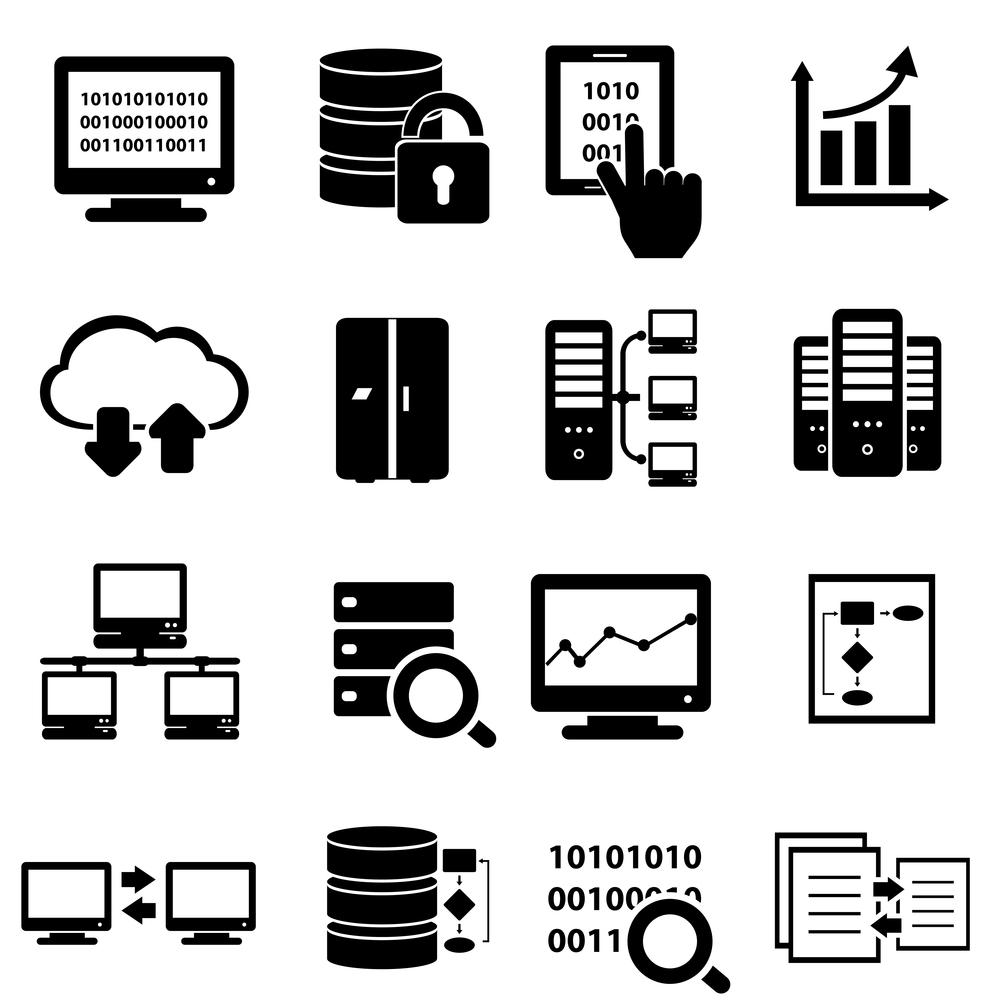The IT Risk Management Lifecycle is a process that allows IT managers to identify, assess, and mitigate potential threats and vulnerabilities to their IT infrastructure.
In today’s digitally driven business landscape, the role of Information Technology (IT) extends far beyond supporting operations—it is an enabler of innovation, a facilitator of growth, and a critical defense line against myriad risks of business processes.
Organizations around the globe are increasingly recognizing the need to manage IT-related risks strategically, given their potential to disrupt business continuity, compromise data security, and undermine stakeholder trust and risk exposure.
However, achieving effective IT risk management isn’t a sporadic act but a carefully orchestrated process—a process encapsulated in the IT Risk Management Lifecycle.
The IT Risk Management Lifecycle offers a structured approach to identifying, assessing, mitigating, and monitoring IT risks. It is a roadmap guiding organizations to navigate the complex and ever-evolving risk landscape effectively.
A study by the Ponemon Institute reveals that companies employing a structured IT risk management approach are 2.5 times more likely to effectively manage and mitigate risks compared to those that don’t.
Yet, despite its pivotal role, the IT Risk Management Lifecycle often remains underutilized. A recent survey by Gartner indicates that nearly 65% of organizations lack a comprehensive IT risk management strategy, exposing themselves to avoidable risks and potential disruptions.
In this blog post, we aim to bridge this gap by demystifying the IT Risk Management Lifecycle, breaking down its steps, and elucidating its multitude of benefits.
The global economy increasingly relies on IT systems, and the rise in cyber threats only highlights the need for robust IT risk management. Cybercrime Magazine predicts that by 2025, cybercrime will cost the world $10.5 trillion annually, up from $6 trillion in 2021.
The staggering figure underscores the importance of a well-crafted IT risk management strategy in safeguarding your organization from potential financial, operational, and reputational losses.
The IT Risk Management Lifecycle is a continuous, iterative process that can empower organizations to proactively identify and address risks, enabling them to maintain a competitive edge while bolstering their resilience against unforeseen disruptions.
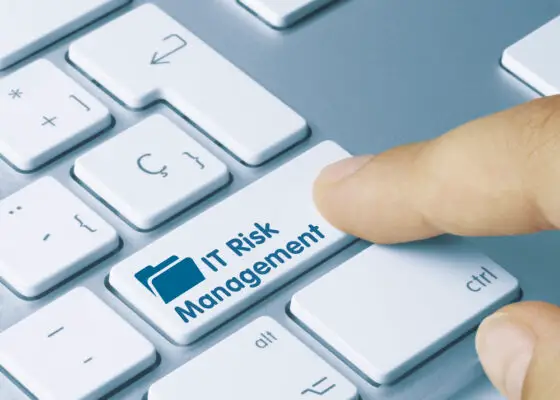
Risk Lifecycle
Risk management cycles: Includes systems and procedures for detecting and controlling risks. I think that’s a risk management concept. The report provides an assessment of risks within the organization.
The program may be ineffective without the complete risk management program, risk-adjusted risk statements, and governance policies. It won’t always work. A systematic process for determining and reporting risks and assessing their impact on human health.
Understanding the IT Risk Management Lifecycle
The IT risk management lifecycle is a continuous process designed to mitigate the potential impact of threats on an organization’s IT infrastructure. It encompasses several key stages: risk identification, risk assessment, and risk response and mitigation, and risk monitoring.
Risk Identification:
This initial planning phase involves recognizing potential risks that could negatively impact an organization’s IT environment. It necessitates a deep understanding of the organization’s objectives, processes, and systems.
This is the first step in the risk management lifecycle, and it involves recognizing potential risks that could negatively impact an organization’s IT environment. This process can involve techniques like brainstorming, interviewing, or checklists. For instance, a company might identify the risk of data loss due to hardware failure or the potential for a security breach.
The key benefit of this stage is that it enables the organization to anticipate potential problems and begin formulating strategies to address them. By identifying risks early, a company can avoid being blindsided by unforeseen issues, potentially saving money, time, and reputation in the long run.
The key benefits of this stage include:
- Identification of potential threats and vulnerabilities
- Identification of assets that need protection
- Identification of areas that require further assessment
Risk Assessment:
Following identification, risks are evaluated based on their potential impact and likelihood of occurrence. Risks are typically classified as high, medium, or low, providing a basis for further risk assessments and prioritizing risk mitigation strategies.
Once risks have been identified, the next step is to evaluate them. This involves doing quantitative risk assessments determining the likelihood of each risk occurring and the potential impact on the organization.
For example, while the risk of a catastrophic data center fire might be low, the potential impact could be devastating, and thus this risk might be given high priority.
Risk assessment is crucial because it helps prioritize resources. Not all risks are equal, and understanding each risk’s potential impact and likelihood allows organizations to focus on the most critical risks first.
The benefits of this stage include:-
- Determining the likelihood of a risk incident occurring
- Determining the potential impact of a risk incident
- Prioritizing risks based on their level of impact and likelihood
Risk Mitigation:
In this phase, organizations develop and implement strategies to address identified risks. Options typically include risk avoidance, risk acceptance, risk transfer, project management institute or risk reduction.
This stage involves developing strategies to both manage risk and reduce the identified risks. These strategies might include implementing redundant hardware to prevent data loss, installing firewalls and antivirus software to mitigate security risks, or creating disaster recovery plans for worst-case scenarios.
Mitigating risks is important because it helps minimize the potential damage that can occur if a risk materializes. It can increase the overall security and stability of the IT environment, protecting valuable data and systems.
Risk Monitoring:
The final stage of the project management lifecycle involves continuous monitoring and reviewing of risks and the effectiveness of the mitigation strategies. This stage ensures the risk management process is dynamic and responsive to organizational IT environment changes.
The final stage in the risk management lifecycle is ongoing monitoring and review. This involves regularly checking to see if the identified risks have changed and the mitigation strategies are effective. It also the risk management life cycle involves identifying new risks as the IT environment evolves.
This step is crucial because it ensures the risk management process is dynamic and responsive to changes. For instance, a new software update might introduce new vulnerabilities that must be assessed and mitigated.
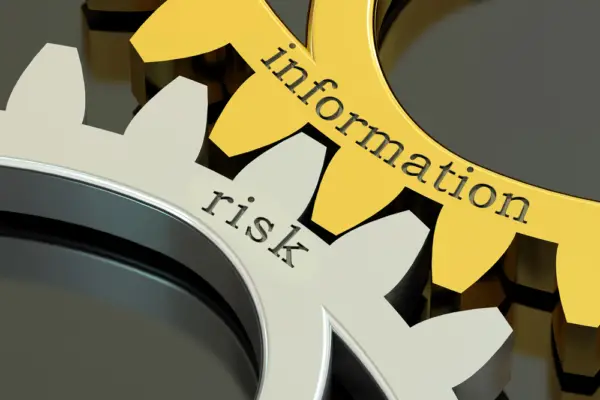
Cybersecurity Risk Management Framework & Risk management process
Risk management provides an environment in which the action should take place. Risk management involves five processes — a program called a risk management plan.
Initially identify the risks, then examine the risks, and risk register prioritize problem implementation, and monitor risks. Manual systems work includes documentation and administrative tasks.
The risk management process provides the context to take the action that must occur. It’s possible for a company to take fewer risky actions than he or she can take. This process starts by identifying risks, analyzing risks, prioritizing the risks, implementing a solution, and then monitoring the risks.
The Cybersecurity Risk Management Framework is a step-by-step approach that helps organizations identify, assess, respond to, and monitor risks to enhance their security posture.
This framework is critical in the modern digital world, where threats are ever-present and rapidly evolving.
1. Risk Identification
Risk identification is about uncovering potential vulnerabilities that cyberthreats could exploit. This could involve identifying software, hardware, procedures, or human behavior weaknesses.
For example, a software product could have a coding vulnerability that can be exploited or an employee could be targeted by a phishing scam due to lack of cybersecurity awareness.
The significance of risk identification lies in its ability to help organizations understand their vulnerabilities before an attacker does. It provides a baseline for improvement and is the first step towards securing your product from cyber threats.
2. Risk Assessment
In this step, identified risks are evaluated based on their potential impact and the likelihood of them being exploited. This involves understanding the threat landscape and the capabilities of potential attackers.
For instance, a small software bug might seem insignificant but if a skilled hacker could exploit it to gain control over your systems, it should be treated as a high-priority risk.
Risk assessment is important because it helps prioritize efforts. Not all risks are equally threatening. Understanding their potential impact allows organizations to focus their resources on the most significant risks.
3. Risk Mitigation
Risk mitigation involves developing strategies to manage the identified risks. This could be through eliminating the risk, transferring it (like through insurance), or reducing its impact.
For example, a product vulnerability could be fixed through a patch, or the risk of a data breach could be reduced by encrypting sensitive data.
Mitigation is vital as it directly reduces the level of risk faced by the organization. It strengthens the security posture and protects the organization’s product, data, and reputation from potential cyber threats.
4. Risk Monitoring
Risk monitoring involves continuously tracking and reviewing the identified risks and the effectiveness of the mitigation strategies. This is crucial because the cyber threat landscape is continuously evolving, and new vulnerabilities can be identified at any time.
For example, a company might have patched a vulnerability in its product, but a new software update might introduce new vulnerabilities that must be assessed and mitigated. Without continuous monitoring, these could be missed, leaving the product exposed to cyber threats.
Key Benefits of the IT Risk Management Lifecycle
Understanding the lifecycle allows organizations to unlock numerous benefits, including:
Enhanced Decision-Making: By systematically identifying, assessing, mitigating, and monitoring risks, organizations can make more informed decisions about their IT environment, leading to enhanced business outcomes.
Improved Regulatory Compliance: Effective IT risk management helps organizations maintain compliance with regulatory requirements, thereby avoiding potential penalties and reputational damage.
Reduced Operational Losses: By proactively identifying and addressing risks, organizations can prevent or limit the impact of IT failures, leading to reduced operational losses.
Increased Stakeholder Confidence: Demonstrating a robust IT risk management process can boost the confidence of stakeholders, including customers, investors, and employees, enhancing the organization’s reputation.
Minimize risk incidents: By identifying, assessing, and mitigating risks, organizations can drastically reduce the likelihood of risk incidents occurring, protecting their IT assets and data.
Reduce the cost of managing risks: By prioritizing risks based on their likelihood and potential impact, organizations can allocate resources more effectively, reducing the overall cost of managing risks.
Increase security and stability: By continually monitoring and reviewing risks, organizations can maintain a secure and stable IT environment, protecting their assets and ensuring business continuity.
Embracing the IT Risk Management Lifecycle for Business Success
In today’s dynamic digital landscape, IT risk management is not just about problem-solving—it’s about strategically steering your organization toward sustained growth and success.
According to a survey by Deloitte, 87% of organizations view IT risk management as a key driver of business performance, highlighting its critical role in today’s business scenario.
Understanding the Core Components of the IT Risk Management Lifecycle
The IT Risk Management Lifecycle comprises four key phases: risk identification, risk assessment, risk mitigation, and risk monitoring. Each phase of life cycle plays a vital role in ensuring a comprehensive and proactive approach to IT risk management.
A Gartner survey reveals that organizations leveraging a lifecycle approach to IT risk management reduce IT-related incidents by up to 60%.
The Art of Risk Identification: Laying the Foundation for Effective IT Risk Management
Risk identification is the first and arguably the most critical step in the IT Risk Management Lifecycle. It involves identifying potential risks that could disrupt your IT environment. According to a Ponemon Institute study, organizations that excel at risk identification experience 20% fewer IT disruptions annually.
Risk Assessment: Prioritizing and Quantifying IT Risks
Following risk identification, assessing each risk’s potential impact and likelihood is crucial. Risk assessment helps prioritize the most significant threats, ensuring optimal allocation of resources.
A survey by the Risk Management Society found that 70% of businesses with an effective risk assessment process experienced fewer unexpected disruptions.
Risk Mitigation Strategies: Balancing Risk and Reward
Risk mitigation involves developing strategies to address identified risks and balancing the potential impact against the cost of mitigation.
The Cybersecurity & Infrastructure Security Agency reports that organizations with a robust risk mitigation strategy reduce IT-related losses by an average of 30%.
Risk Monitoring: Ensuring a Dynamic and Responsive IT Risk Management Process
The final stage of the lifecycle is the risk management evaluation and monitoring, which involves regular tracking and reviewing of risks and the effectiveness of mitigation strategies. A report by Forrester Research indicates that organizations that actively monitor IT risks reduce risk-related incidents by 45%.
The Transformative Benefits of IT Risk Management Lifecycle Steps
A well-executed IT Risk Management Lifecycle offers numerous benefits, transforming how organizations navigate their IT risk landscape. A study by Deloitte reveals that companies with a structured IT risk management approach are 40% more likely to achieve their business objectives.
Enhanced Decision-Making Through Comprehensive Risk Analysis
By systematically identifying, assessing, and mitigating IT risks, organizations can make more informed business decisions. A survey by PwC found that 90% of top-performing organizations use risk analysis for strategic decision-making.
Improved Regulatory Compliance and Reduced Legal Risks
Effective IT risk management helps organizations comply with regulatory requirements, reducing legal risks. According to a report by IBM, companies with strong IT risk management processes are 50% less likely to face compliance issues.
Minimizing Operational Losses and Ensuring Business Continuity
Proactive IT risk management helps prevent disruptions, thereby minimizing operational losses. A study by Accenture shows that businesses with robust IT risk management strategies report 30% lower operational losses.
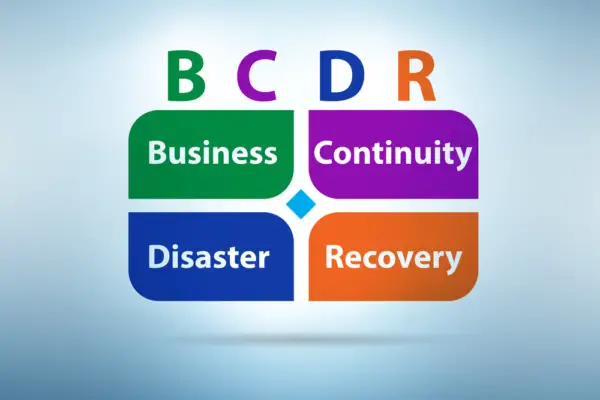
Boosting Stakeholder Confidence and Reputation Management
An effective IT risk management process can enhance stakeholder confidence and bolster an organization’s reputation. A Forbes survey indicates that 78% of customers trust companies with strong IT risk management practices.
Fostering a Risk-Aware Organizational Culture
An IT risk-aware culture can significantly enhance your risk management process. A survey by EY reveals that organizations with a risk-aware culture are 60% more effective at mitigating IT-related risks.
Deep Dive into the IT Risk Management Lifecycle
Risk Identification:
Effective risk identification is the cornerstone of any successful IT risk management process. It involves understanding the business context, conducting a thorough analysis of the IT environment, and identifying potential threats. Key activities in this phase include asset identification, threat identification, and vulnerability identification.
Risk Assessment:
Following identification, risks are evaluated based on their potential impact and likelihood of occurrence. This risk assessment process facilitates the prioritization of risks, ensuring that resources are allocated efficiently to mitigate the most significant threats.
Risk Mitigation:
Risk mitigation is a crucial phase where organizations develop and implement strategies to address the identified risks. The chosen approach may vary based on the nature of the risk, the potential impact, and the organization’s risk tolerance.
Risk Monitoring:
Risk monitoring is the final, but arguably the most important, step in the risk management lifecycle. It involves the project team regularly tracking and reviewing risks and the effectiveness of the implemented mitigation strategies.
Real-World Applications of IT Risk Management Lifecycle Steps
The practical application of the IT Risk Management Lifecycle can vary across industries and organizations. However, its effectiveness in mitigating risks and enhancing business performance remains consistent.
A survey by McKinsey reveals that 85% of organizations that have successfully implemented an IT risk management lifecycle have witnessed significant performance improvement.
Case Studies: Successful IT Risk Management in Action
Real-world examples offer invaluable insights into the practical application of IT risk management. According to a Boston Consulting Group study, businesses that actively apply IT risk management practices have reported a 25% increase in operational efficiency.
Industry-Specific IT Risk Management Considerations and Challenges
Different industries face unique IT risk management challenges, necessitating tailored risk control strategies. A report by KPMG shows that industry-specific IT risk management approaches can reduce risk incidents by up to 40%.
Addressing Emerging Risks in a Rapidly Evolving IT Landscape
With the IT landscape rapidly evolving, organizations must stay ahead of emerging risks. A study by PwC reveals that 72% of companies using an adaptive IT risk management approach successfully mitigated emerging IT risks.
Integrating Cutting-Edge Technologies and Best Practices in IT Risk Management
Leveraging technology and best practices can significantly enhance IT risk management. A Gartner report indicates that businesses integrating technology in their IT risk management process reduce risk incidents by an average of 35%.
Leveraging Artificial Intelligence and Machine Learning for Advanced Risk Detection
Artificial Intelligence (AI) and Machine Learning (ML) can help organizations to identify risks and respond to risks faster. According to a report by Accenture, companies using AI for risk management have seen a 20% reduction in risk incidents.
Harnessing the Power of Blockchain for Secure and Transparent Risk Management
Blockchain technology offers a secure and transparent method for managing IT risks. A study by Deloitte shows that organizations using blockchain for risk management have experienced a 30% reduction in fraud-related incidents.
Implementing Robust Security Frameworks and Standards for Comprehensive IT Risk Management
Adopting robust security frameworks and standards can enhance the effectiveness of IT risk management. A survey by ISACA shows that organizations that follow established IT security standards reduce their cybersecurity risk by up to 50%.
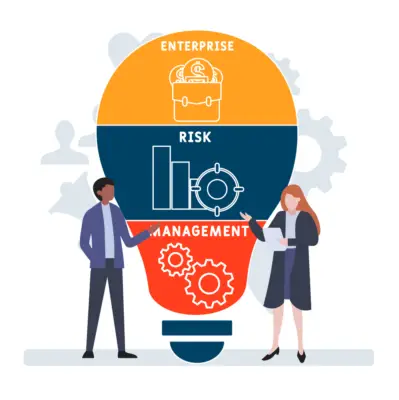
Conclusion
In conclusion, the IT Risk Management Lifecycle is fundamental in establishing an impervious IT environment. With its four crucial stages – risk identification, assessment, mitigation, and monitoring & review – it provides a comprehensive approach to managing the potential risks that can have severe impacts on an organization.
The significance of this lifecycle cannot be overstated. It doesn’t just reduce the probability of risk incidents but also helps in effective resource allocation, thereby reducing the cost of managing risks. It’s the key to maintaining a secure and stable IT environment that upholds business continuity, protecting your organization’s reputation and bottom line.
For those looking to delve deeper into IT risk management, I highly recommend the ‘ISO 31000 Risk Management Principles and Guidelines.’ It’s an international standard that provides a robust framework for managing risk.
For a more hands-on approach, ‘The Risk IT Framework’ from ISACA provides practical guidance for integrating risk management into your organization’s IT processes. Remember, a proactive approach to risk management is an investment in your business’s future security and success.
There are also many resources available such as certification programs, webinars, and IT risk management frameworks. Some valuable resources include:
- The National Institute of Standards and Technology (NIST) Framework for Improving Critical Infrastructure Cybersecurity.
- The International Organization for Standardization (ISO) 27001 Standard for Information Security Management Systems.
- The CompTIA Security+ Certification Course.

Chris Ekai is a Risk Management expert with over 10 years of experience in the field. He has a Master’s(MSc) degree in Risk Management from University of Portsmouth and is a CPA and Finance professional. He currently works as a Content Manager at Risk Publishing, writing about Enterprise Risk Management, Business Continuity Management and Project Management.

